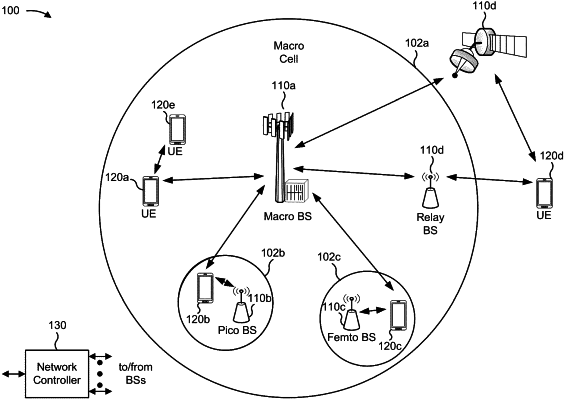| CPC H04B 7/18532 (2013.01) [H04W 72/0453 (2013.01); G01S 19/29 (2013.01); H04W 88/16 (2013.01)] | 30 Claims |

|
1. A user equipment for wireless communication, comprising:
memory; and
one or more processors coupled to the memory, the memory and the one or more processors configured to:
estimate a Doppler drift, associated with a service link between the user equipment and a reference point for an uplink transmission, using a position of the user equipment and an ephemeris associated with the reference point, wherein the reference point is one of:
a satellite that provides a cell covering the user equipment, the satellite being associated with a non-terrestrial network, or
a gateway associated with the satellite;
determine a transmission frequency for the uplink transmission using the reference point and a target uplink frequency for signal reception at the reference point,
wherein the determining includes adjusting the transmission frequency to compensate for the estimated Doppler drift, and
wherein the transmission frequency is independent of a received downlink frequency of the user equipment; and
transmit the uplink transmission using the transmission frequency.
|